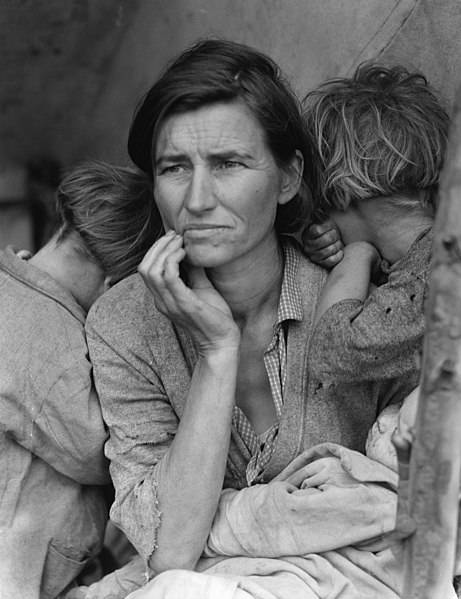The Great Depression was a period of unprecedented economic slowdown between 1929 and 1933. It began in the United States of America — but soon the whole world was in the grip of recession that it had never seen before. Here are a few quick facts and summarized information on the economic tragedy called the Great Depression.
Interesting Facts about the Great Depression
- When did it happen?: the Great Depression began in August 1929 and lasted for 43 months until March 1933.
- What caused the Great Depression?: There were multiple causes. America was producing a great deal of innovative products and society consumed them by taking credit and installments. Eventually the whole situation became unsustainable. Then people invested in stock market without thinking — this led to higher stock price value in comparison to its real value. The stock market crashed and banks failed. The situation was further worsened due to drought and dust storms.
- Black Thursday: On 24 October 1929, the Wall Street stock market suddenly lost 11% of its value. When the stock exchange took corrective measures, the market closed with over 6% loss at Dow Jones Industrial Average.
- Black Monday: On 28 October 1929, stock market lost nearly 13% value.
- Black Tuesday: Panic selling continued and Wall Street lost another 11.73% of its value.
- Between 1929 and 1933, stocks listed on Dow Jones market index lost 90% of their value.
- During the Great Depression, world’s GDP dropped by 15% between 1929 and 1932.
- The Gold Standard is considered to be the was the primary mechanism through which the Great Depression spread all over the world.
- About 11,000 of total 25,000 banks failed during the Great Depression.
- Around 300,000 companies became bankrupt.
- Due to failure of banks, millions of people lost their savings.
- At the beginning of the Great Depression, Herbert Hoover was president of the United States.
- A number of people blamed Hoover for the Great Depression. The watery soup eaten by the unemployed was named “Hoover Stew”, and the shantytowns constructed from cardboard and metal sheets were called “Hoovervilles.”
- Dust Bowl was a period of severe dust storms and ecological disaster. This greatly impacted American and Canadian farmers. Dust Bowl and the Great Depression mutually aggravated each other’s impact.
- By April 1933, around $7 billion in deposits had been frozen in failed banks.
- In 1929, unemployment rate in America was around 3%. In 1933, it rose to 25%. This means that 1 out of every 4 people was out of work.
- On 04 March 1933, democrat Franklin D. Roosevelt succeeded the republican government of Herbert Hoover. President Roosevelt immediately took action and proposed the “New Deal”.
- New Deal was a plan to stabilize industrial and agricultural production, create jobs, and stimulate the economy.
- The New Deal created around 100 new government offices and 40 new agencies.
- President Roosevelt also introduced legislation to regulate the stock market and prevent another crash.
- Roosevelt created 13 major laws in his first 100 in office.
- Roosevelt coined the term “first 100 days” during a radio address on 24 July 1933.
- One of the most prominent features of Roosevelt’s regime was the introduction of the Social Security Act in 1935. The Social Security Act provided pensions to the unemployed, disabled and persons in old age. This Act gained widespread popularity.
- The Great Depression was ended by World War II. Due to war, the military manufacturing, industrial production and employment — all increased.
- Migrant Mother is an iconic photograph taken by Dorothea Lange in Feb/March 1936. The photograph shows Florence Owen Thompson with her children during the Great Depression in California. This photograph became face of the hardship endured by people in the US. More information on this photograph.

Migrant Mother Photograph.
Use the citation below to add this article to your bibliography
"Great Depression 1929: Interesting Facts, Figures and Summary." Dashamlav.com. Web. 27 July 2024. <https://dashamlav.com/great-depression-1929-facts-figures-summary/>
Dashamlav.com, "Great Depression 1929: Interesting Facts, Figures and Summary." Accessed 27 July 2024. https://dashamlav.com/great-depression-1929-facts-figures-summary/
"Great Depression 1929: Interesting Facts, Figures and Summary." (n.d.). Dashamlav.com. Retrieved 27 July 2024 from https://dashamlav.com/great-depression-1929-facts-figures-summary/
